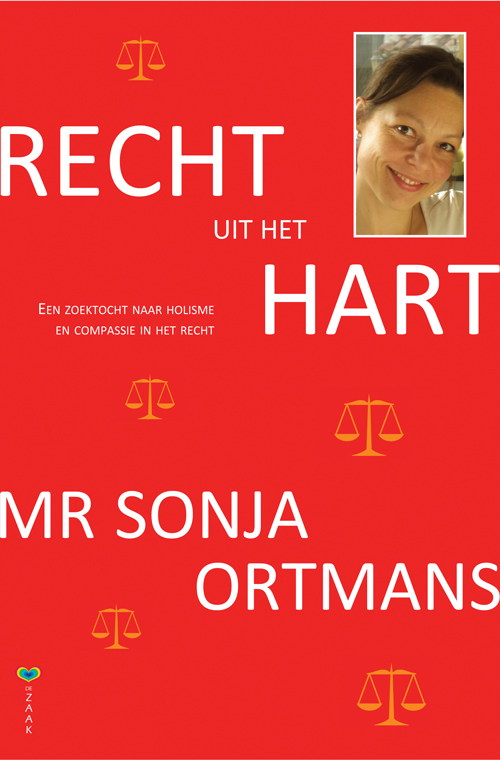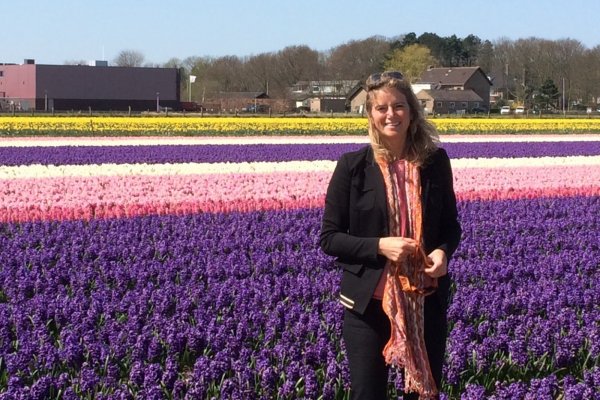Holistic Practice Talk
Petra about the holistic approach
It often has much more to do with yourself than with your clients. As a holistic lawyer you take a step back and see everything in a wider perspective. You want to hear the story from several sides, to take a helicopter view before you are able to help your client. Very often, you will invite the other party for a meeting at your office. Solving the problem by merely following your client’s wishes does not mean that his dilemma will be resolved. Conflict is emotion. If the law would consist of pure facts, it would be easy. If the only thing your client requires is money, the conflict would be solved if he receives the money, but that is not the case. The real conflict is the emotional confusion aroused in his mind by another person causing a rift in the harmony he was used to.
When you solve this problem first, it creates room to listen and to see. To hear and to feel, the head-heart connection is restored. In that case a rift can lead to growth. You are only the instrument to guide and to facilitate.
The holistic approach is based on the idea that a system, which can be a person or an organisation, consists of all the component parts/elements and the interaction or relationship between those component parts. Stated succinctly: the whole is greater than the sum of its parts.
Holistic lawyers are the new energy movers
Gradually, I found out that in America there are already lawyers who call themselves holistic. Many broad-minded lawyers change to mediation after some 20 years. That development is taking place throughout the world. Many attorneys working as a family lawyers experience that the negative energy arising from legal controversies is so tiring that they long for peace-making and making connection through collaboration. Like Bill van Zyverden from Vermont whose law office is in Middlebury. His door bears the text ‘Holistic Justice Centre’. He thought up the term “holistic law practice” and founded an alliance for holistic lawyers, The International Alliance for Holistic Lawyers.
RECHT UIT HET HART (STRAIGHT FROM THE HEART), Sonja Ortmans meets Bill van Zyverden
In this book, Sonja Ortmans writes about her visit to Bill and the manner in which he describes the  holistic law practice.
holistic law practice.
“Bill van Zyverden, Founder of the International Alliance for Holistic Lawyers, now “just” practising law in Vermont, sent me this as his Recommendation for the Integrative Law movement and our upcoming Leadership Summit:
- Our goal is to be the very embodiment of Love.
- Part of the journey is to be confronted with challenges appearing as obstacles to enhance our desire and longing. These include fear, pain, anger, guilt, judgment resulting in separation, attack, and defence.
- The Strategy is to work individually and in groups with similar challenges.
- Lawyers and their clients, opposing counsel, all symbiotic relationships, share common challenges and therefore travel their journeys together to help each other.
To a question of Sonja Ortmans posed to Bill about holism, he answered as follows:
“In the early years of the law profession, lawyers were not opponents but they were persons who provided help. They did not take on the anger of their client and were representatives of a respected profession in society. They usually brought the parties together and solved the problem. When America had just been formed, that was the method used. The pilgrim fathers (housed in the Pieterskerk in Leiden in the Netherlands before crossing to America) brought much of the Dutch legal system along to America. In the beginning, problems were solved more according to the spirit of the law. The community abided by the solution, whatever the outcome was. After World War II, this attitude changed. People wanted to win. Nobody had any time left to work on a better relationship. There was no longer time for reflection or to think it over why something happened or what the next step ought to be. The law was codified because the greater part of the people had only eyes for their own benefit. However, as a result the authorities had to force people to enforce the rules. It became bigger and bigger, out of control. Because everybody had only eyes for one’s own benefit, the organic balance was broken.”
On what point do holistic law practice and mediation differ?
To this question Bill answered that it is not just only about a word game. During mediation sessions the lawyer adopts a neutral attitude. As a holistic lawyer you represent one of the parties. Your task is that your client “wins”. So, you will first need to find out what “winning” means to you. On the other hand, you do use a mediation approach, whereby you hope to find a solution that will work for your client as well as for the other party. As a mere mediator you take a different position.
Kim Wright
J. Kim Wright is a lawyer and a mediator in America, founder of CuttingEdgeLaw.com. I consider her as the figurehead of the Integrative Law Movement where she dedicates herself to a new approach of the profession of lawyers and mediators. In her opinion a holistic lawyer is someone who has a wider perspective than just “the other side” of the problem, the viewpoint of the other party. Integrative law covers the various directions in which lawyers practise law. They are not only lawyers with their heads, but also with their hearts. Therefore, it is also about the role of the lawyer himself in the process, his influence and the impact of the problem and the solution across society. Kim Wright states that holistic law is a specific method rather than a process. It is an umbrella term which can incorporate different styles such as mediation, collaborative practice, therapeutic court decisions, restorative case law, collaborative divorce and other possibilities, whereby the common denominator is always that work is performed while maintaining a fundamentally positive attitude, that the road taken is usually without being involved in a legal battle and that work is performed in cooperation with other disciplines, so that the roots causing the problems are tackled and solved. Kim Wright travels around the world and speaks to all the pioneers within the Movement. Her goal is to connect the people and to prime the Integrative Law Movement.
The International Alliance of Holistic Lawyers

The International Alliance of Holistic Lawyers – IAHL is an organisation in America where for the first time a platform was offered to discuss holistic law. Members of the IAHL shared their views about the transformative manner of having a law practice in the 21st century. After 2011, the IAHL more or less faded away. However, there is a charter which can be found on the website. According to the IAHL, all its members are committed to the collective concept of “Peace-law” which they define as follows:
PEACELAW according to the IAHL
Promote peaceful advocacy and holistic legal principles
Encourage compassion, reconciliation, forgiveness, and healing
Advocate the need for a humane legal process
Contribute to peace building at all levels
Enjoy the practice of law
Listen intentionally and deeply in order to gain complete understanding
Acknowledge the opportunity in conflict
Wholly honour and respect the dignity and integrity of each individual

